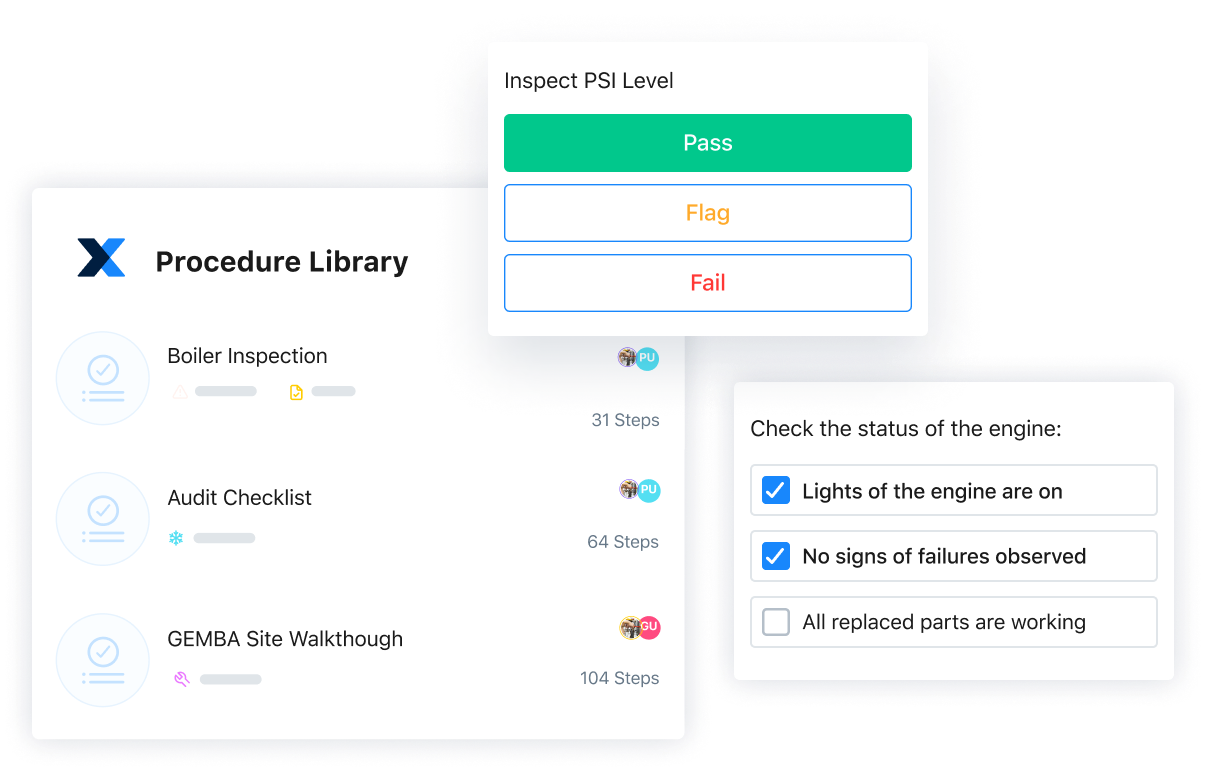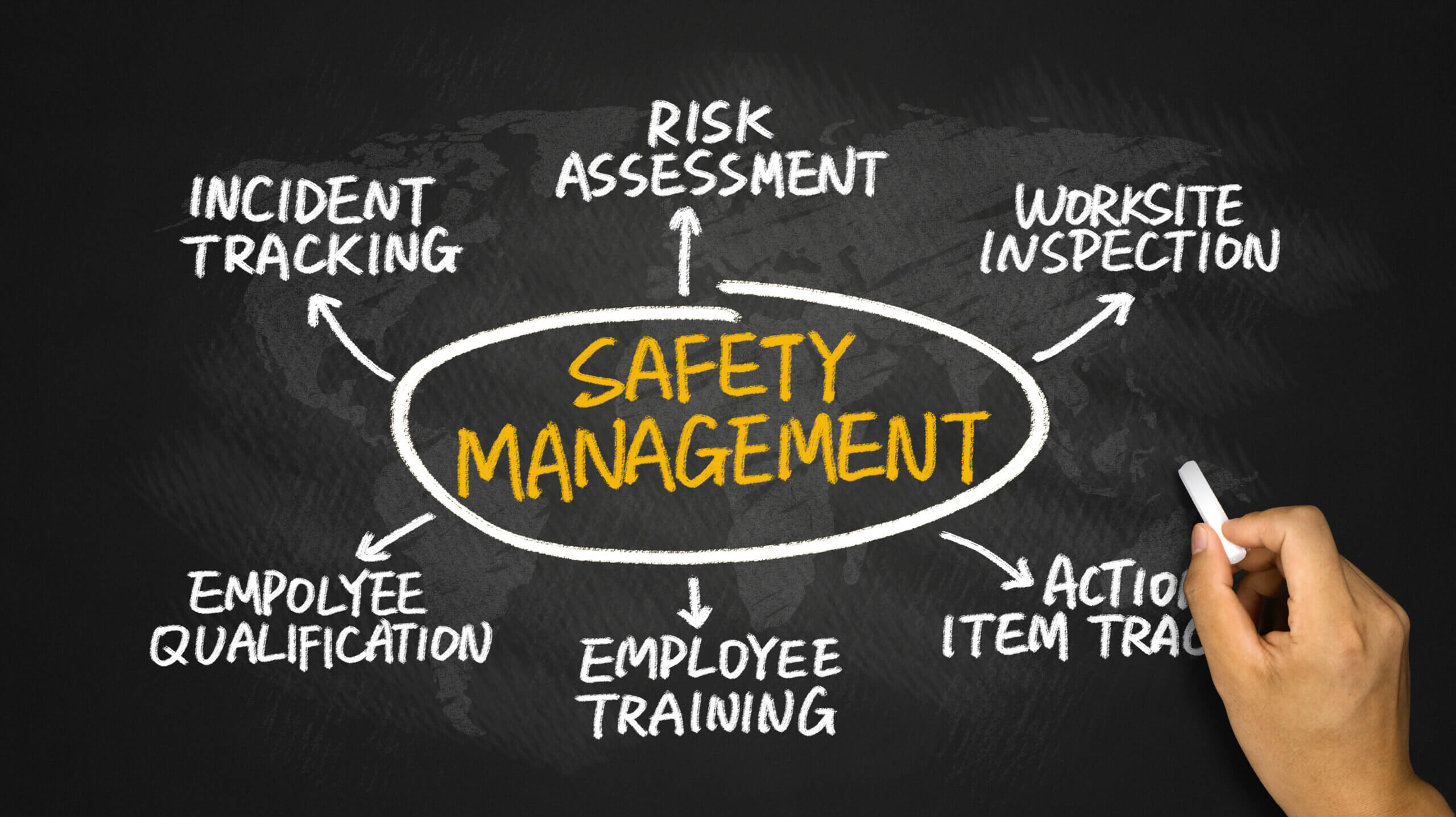
Many people who work in maintenance know that the Occupational Safety and Health Administration (OSHA) is a federal agency that operates under the authority of the Department of Labor. It functions under a mandate which not only develops regulations set forth by the Occupational Safety and Health Act (OSH Act) but also enforces them.
OSHA electrical safety is just one of the many sections under the Act that requires electricians to meet a number of requirements. We will discuss what those requirements are, how the OSHA enforces them, and why they should matter to you.

Do you have employees who work with electricity? Then according to the Act, you have a responsibility to provide safe working conditions. There are many fields where workers work directly with electricity, not just electricians. Engineers, HVAC Mechanics, and many more. These are potentially dangerous jobs that can include, but are not limited to, working on a variety of:
- motorized equipment
- overhead power lines
- circuit assemblies
- cable harnesses
Are the dangers of electricity limited to these types of workers? No. Even people who work in the following jobs could be indirectly exposed to the inherent dangers of electricity:
- office workers
- salespeople
- machine operators
It doesn’t really matter which of the two lists above your employees fall into, they should expect are due a workplace safety culture and workplace. In accordance with that, OSHA’s electrical standards have been designed with a view of protecting employees who have jobs that expose them to explosions, electrocution, and electric shocks.

OSHA Electrical Standards
Depending on your industry, there are a number of set electrical standards.
29 CFR 1910 General Industry OSHA Electrical Standards
This standard has three subsections:
- (Subpart I) Personal protective equipment (PPE)
- (Subpart R) Special industries
- (Subpart S) Electrical
These are covered by 1910.137 (Electrical Protective Equipment)
29 CFR 1915, 1917, and 1918 Maritime Industry Electrical Standards
- (Subpart L) Electrical machinery
- (Subpart G) – Related terminal operations and equipment
These are covered by Standard Numbers 1915.181 and 1917.157. (Electrical Circuits and Distribution Boards and Battery Charging and Changing, respectively).
29 CFR 1926 Construction Industry Electrical Standards
- (Subpart K) – Electrical
- (Subpart V) – Electric Power Transmission and Distribution
It’s imperative you understand these are just a fraction of the requirements, as this is just the Federal component. On top of these, there is a list of other rules which depend upon your state. At the time of writing this, there are 22 states in the US that currently maintain OSHA-approved state-level plans, so you need to check and see if any apply to you.
To assist both employers and employees, the OSHA requested the National Fire Prevention Association (NFPA) to produce the National Electrical Code, standard 70, and Electrical Safe Work Practices, standard 70E. The purpose of the NFPA 70E is to help avoid accidents and fatalities in the workplace caused by arc flashes, shock electrocution, and arc blasts. This also aids compliance with the above-mentioned OSHA 1910 Subpart S and OSHA 1926 Subpart K.
Electricians that maintain the responsibilities of their individual trades by adhering to both the NFPA 70 and 70E will, for the most part, also be OSHA compliant. However, all trades, whether in the General Industry segment or the Construction Industry segment, will have additional responsibilities to meet and adhere to. It should also be noted that often times state plans are even more stringent than OSHA rules, and they will sometimes differ as well.

How OSHA Enforces Electrical Safety Requirements
There are two ways in which OSHA can and will enforce its requirements.
- It enforces the OSH Act’s general duty clause.
- Through the enforcement of regulations requiring employers to implement health and safety precautions.
With regards to the first, the Act’s clause states that all employers must “furnish to each of its employees the conditions of employment and a place of employment free from recognized hazards that are causing or are likely to cause death or serious injury or harm to its employees.” What are the ramifications of violating these OSHA clauses?
Obviously, the health and welfare of your employers are put in jeopardy but there are significant monetary fines levied as well. Penalties include:
- Non-serious violations: to a maximum of $7000
- Serious violations: to a maximum of $7000
- Willful violations: to a maximum of $70000
- Repeated violations: to a maximum of $70000
- Failure to abate: to a maximum of $7000 per day
However, OSHA is within its rights to reduce any penalty they see fit depending on the circumstances.

Working with OSHA Electrical Safety Requirements
So what can you as an employer do to help prevent any kind of electrical accident in the workplace?
Here are some general guidelines that support OSHA’s Electrical Safety Program:
- All electrical equipment should pass a visual inspection before use
- Use equipment properly and for its intended purpose only
- Never use defective—or unapproved—equipment
- Always make sure all power supply systems, electrical equipment, and electrical circuits are properly ground
- Don’t use portable electric tools in wet areas or around exposed wires
- Follow lockout/tagout procedures
- When working near power lines, only use non-conductive materials such as wood or fiberglass
Passing an OSHA Electrical Safety Program Inspection
In order to pass an OSHA Electrical Safety Program inspection, you need to be ready to answer some questions that will likely—if not certainly—come up during an inspection. Below, we address the typical questions an OSHA Inspector will ask, what they mean to you, and what you need to do to be prepared and in compliance if and when an inspection happens.
First, it’s interesting to note that the OSHA has changed what they focus on. They used to look at process changes but now they’re more focused on arc flash safety. So it’s important that you stay up to date on what’s expected of you and what they could be looking for during an inspection. Here are some typical questions:
Q. Do all job locations have a description of the circuit or equipment?
A compliance officer will expect you to know your workplace. And that will include you providing either drawings or written descriptions of equipment or circuits for your workers. If these descriptions are not available at the job site, they may conclude that you haven’t assessed a facility for electrical hazards.
Q: Have you provided a detailed job description of all planned work?
Having such a description means workers are able to refer to which procedures much be used to complete the job. The OSHA has a publication called 29 CFR 1910 which informs employers as to their responsibilities around protecting their employees from all electrical safety hazards. Part of that is they must train their workers on safe practices for each job.
Q: Can you justify why certain equipment can’t be de-energized or work deferred until a scheduled outage?
OSHA regulations state that live parts should be de-energized before an employee works on them. However, if the employer can prove that doing so would increase or add additional hazards—or it simply isn’t feasible to de-energize—this regulation can be nullified. Simply put, your workers should never be working on live circuits unless it’s absolutely necessary. Can you prove that’s the case? Are your workers safe?
A shortlist of other possible questions includes:
- Do you have all safe workplace procedures in place?
- Have you established detailed safe work procedures?
- Do you have a job briefing checklist, and is that checklist completed before each job?
Need help creating mandatory job-specific checklists? Consider software like MaintainX that can create them with ease.

Meeting OSHA Electrical Safety Requirements
Despite these standards and requirements being in place, there are still a shocking number of accidents. Unfortunately, the majority of them were fatal electrocutions. For the past several years, OSHA has cited the same three electrical standards as being commonly violated:
- Control of hazardous energy (lockout/tagout), general industry
- Electrical, wiring methods, components and equipment, general industry
- Electrical systems design, general requirements, general industry
You can be sure these will be closely inspected should you get a visit from an OSHA inspector, so be prepared. For your sake and for the health and safety of your employees.
5 Steps to Prepare for the OSHA Inspection Process
Suppose your business falls under the purview of OSHA regulations. In that case, you need to have an accessible recordkeeping system in place to maintain reports of compliance safety, previous on-site inspections, past OSHA violations, and information regarding safety programs and safety training your company offers. In the event of an inspection, you’ll thank yourself for making the effort.
Here we detail six ways you can be ready and prepared if an inspection comes knocking on your door. If you want more information about OSHA, visit OSHA.gov.
1. Establish Key Points of Contact
It’s imperative that you chose and designate key points of contact before an inspection. This person should be intimately familiar with your business’s inspection protocols and record keeping. Without this person, you’ve already significantly lowered your chances of passing inspection. An employee representative can be a key point of contact and should be someone who understands the scope of the inspection.
This person should be extremely professional, calm under pressure, and able to maintain composure should the inspector ask tough questions. Your key contact needs to be familiar with the OSHA inspection process, particularly with the rules that apply to your industry and processes. It’s also the responsibility of your contact person to make sure your team is aware of their rights when being interviewed.
2. Put a Response Team in Place
Readiness should include having a response team in place. This response team can be made up of two or three people who want to be involved and responsible for understanding inspection processes. This team needs to have a solid understanding of your company’s compliance practices and standards so they can help enforce them throughout your company.
3. Maintain Your Professionalism
Professional behavior should be common sense, but unfortunately, inspectors are frequently treated with hostility and disrespect. If, during the course of the inspection, you enter areas where protective gear is necessary, politely ask the inspector to suit up. This is a good way to show that your company pays attention to and maintains compliance with safety standards at all times.

4. Make the Right Information Available
Members of your contact and response teams must be able to provide the needed information and answer any questions. Being able to quickly retrieve your inspection history with an audit trail of dates will go a long way toward leaving a positive impression and passing the inspection.
5. Have Your Records Available
If you are using software like MaintainX, your organization’s records will be available at your fingertips and easily exportable. With MaintainX, you can create digital versions of your inspections and checklists that can be completed by your team.
OSHA Inspection Checklists
There’s a vast number of OSHA inspection checklists and regulations covering a variety of issues. Check out the MaintainX Global Procedure Library for a range of inspection SOPs.
Use MaintainX to Put Employee Safety First
While the focus of this article has centered around preparing your business to comply with federal regulations and inspections, it is important to remember why this exists. OSHA was put in place to stem the increasing rates of workplace injuries and fatalities that surged in the 1960s. Since its inception, the U.S. occupational injury rate is 40 percent lower, and deaths from occupational injuries are at an all-time low—60 percent lower than 30 years ago.
These well-intentioned rules can help keep your employees safe and productive to enable long-term business success. And, if you end up with a list of alleged violations and abatement dates, follow up with your OSHA compliance officer.
Download MaintainX safety audit software on mobile or desktop.
FAQs

Caroline Eisner is a writer and editor with experience across the profit and nonprofit sectors, government, education, and financial organizations. She has held leadership positions in K16 institutions and has led large-scale digital projects, interactive websites, and a business writing consultancy.




















